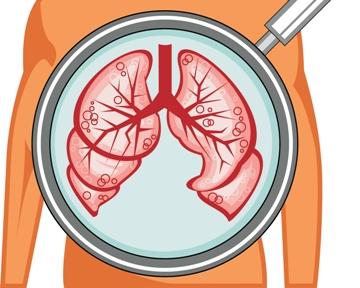Shifting Lung Cancer Burden in the US
, by DCEG Staff
In the United States, incidence of lung cancer historically has been higher in men than in women, reflecting differences in smoking patterns. Previous studies had suggested a shift in this pattern. Using lung cancer incidence data from the North American Association of Central Cancer Registries and smoking behavior data from the National Health Interview Survey, researchers at the American Cancer Society and the National Cancer Institute confirmed a reversal of this pattern among younger non-Hispanic whites and Hispanic whites born since the mid-1960s (aged 30-49 years at diagnosis). Their findings were published online in the New England Journal of Medicine on May 24, 2018.
Sex-specific differences in smoking behaviors do not seem to account adequately for this shift: prevalence of smoking in non-Hispanic and Hispanic white women only approached and never exceeded that of their male counterparts. A closer look at the histological types revealed a higher rate of adenocarcinoma among younger women, compared to men; risk for this lung cancer type decreases more slowly after smoking cessation than others.
These findings may indicate a future with higher lung cancer burden in women and highlights the need to intensify anti-tobacco efforts to decrease smoking in young women. Further investigation into sex-specific lung cancer risks is needed through continued monitoring as well as etiologic studies to determine the factors contributing to the emerging excess of lung cancer incidence in young women.
Reference: Jemal A et al. Higher lung cancer incidence in young women than young men in the United States. N Engl J Med. May 24, 2018. DOI: 10.1056/NEJMoa1715907.
